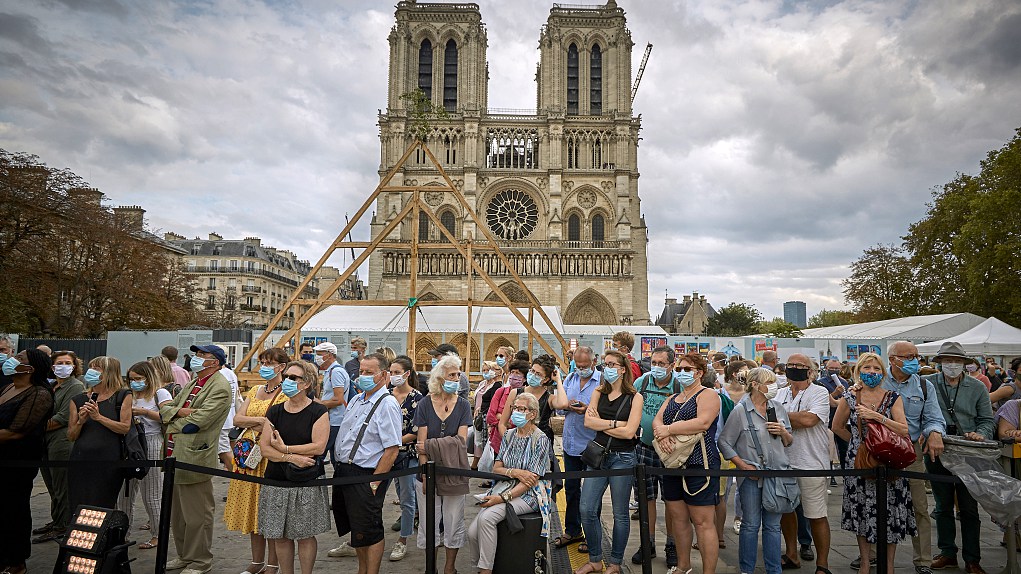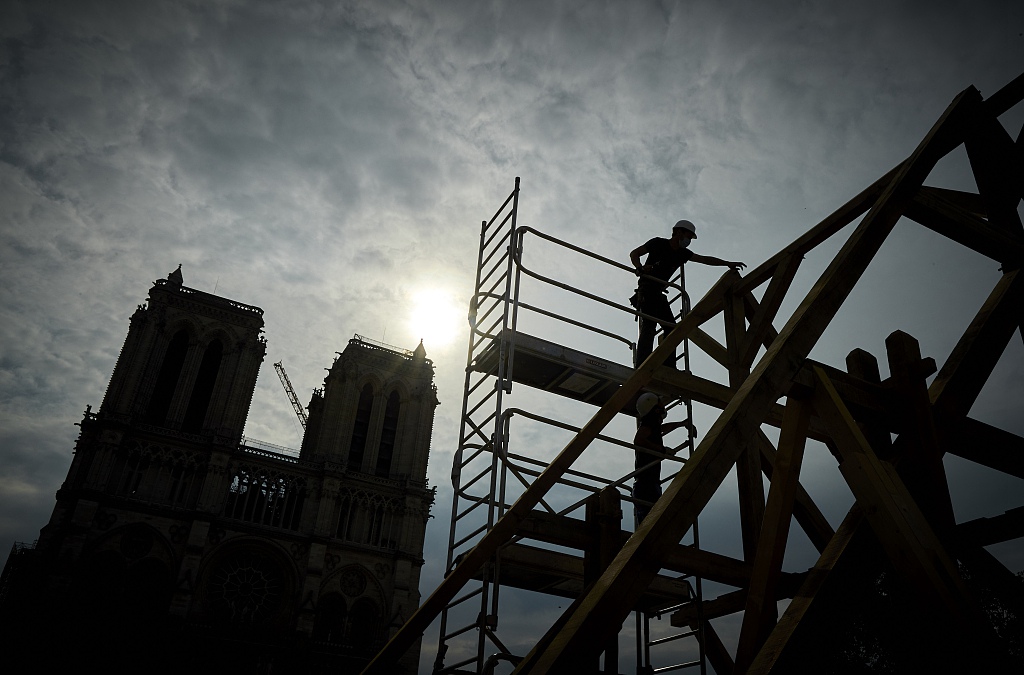
Parisians and tourists watch members of the Carpenters without Borders reconstruct one of the missing timber frames of Notre-Dame Cathedral on September 19, 2020 in Paris, France. /CFP
Parisians and tourists watch members of the Carpenters without Borders reconstruct one of the missing timber frames of Notre-Dame Cathedral on September 19, 2020 in Paris, France. /CFP
A group of carpenters used medieval techniques on Saturday to raise up a three-ton oak truss by hands in front of the Notre-Dame Cathedral, during the restoration of the ancient structure which was severely damaged in a fire in April 2019.
The truss was a replica of the wooden structure that was consumed in the fire. The demonstration of the technique from 800 years ago also shows the determination of replicating the cathedral in the original form – a topic that triggered debates of whether the new spire should be designed in a futuristic style or restored in its original appearance. The event was also to mark the European Heritage Days.
A total of 25 trusses are to be installed, according to the Associated Press, which cited a forestry expert working on the project, Philippe Gourmain, as saying that the carpentry phase will not come before 2022.

Members of Carpenters without Borders reconstruct one of the missing timber frames of Notre-Dame Cathedral on September 19, 2020 in Paris, France. /CFP
Members of Carpenters without Borders reconstruct one of the missing timber frames of Notre-Dame Cathedral on September 19, 2020 in Paris, France. /CFP
Gourmain said the carpentry is not the problem. It is the stone that matters. It is not easy to find similar stones to support the carpentry, Gourmain told AP.
French President Emmanuel Macron said earlier that he hopes the cathedral reopen in 2024 in time for the Paris Olympic Games, however, many experts say it was unrealistic.
Hundreds of visitors watched the demonstration over the weekend.
"It is a moment to see, ancestral techniques that last. There is the present and the past, and it links us to our roots," said Romain Greif, an architect who came with his family to watch the display. "It's an event."